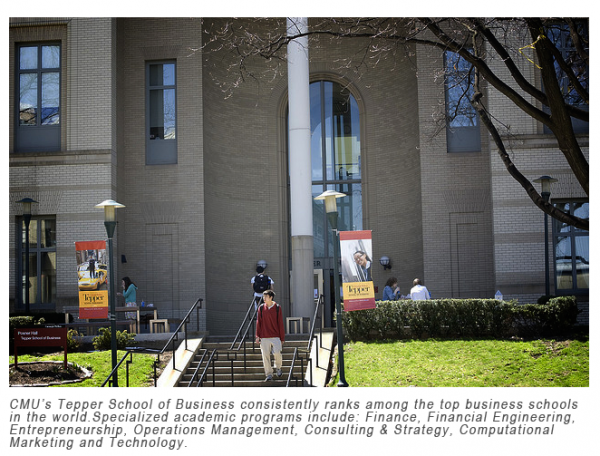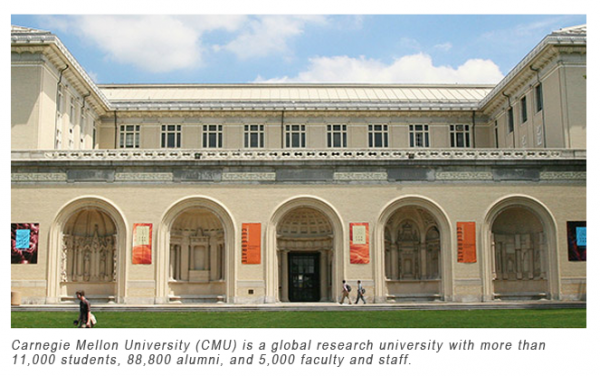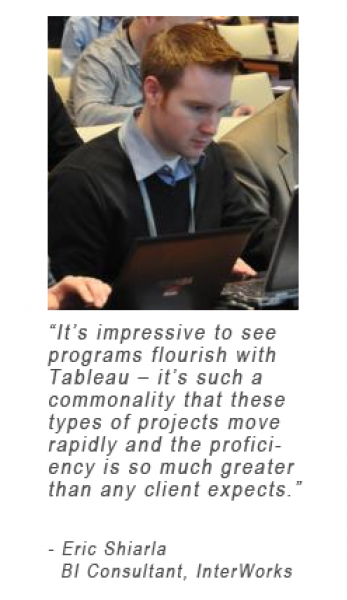Ted Curran, Executive Director of Finance of the Tepper School of Business at Carnegie Mellon University (CMU), took a leap of faith when considering a massive over-haul of the school’s data evaluation system. This system affected over 250 faculty and staff, and an over-haul would potentially uncover necessary alterations to the school’s reporting and analytics. With an ultimate goal of creating a central data warehouse from multiple source systems, and clarifying data for the end user (the dean of the Tepper School of Business), Ted pursued options within Tableau Software after an extensive review of three different business intelligence solutions.
Getting started with Tableau:
Ted quickly tested the skills of Tableau Gold Partner and Tableau consulting firm, InterWorks, Inc. Eric Shiarla, Business Intelligence Consultant at InterWorks, stepped in to evaluate CMU’s specific needs. Eric was quick to analyze CMU’s server requirements and develop a strategy for onsite consultation. Within a few days, Eric met with nearly ten units to discuss the goal of the data exploration, how to obtain the data, and how to prototype customized dashboards. The initial presentation to the business school staff and deans, which outlined the scope and capabilities of the strategy, prompted a quick “how can we proceed?” from Ted, who was anxious to get the ball rolling. The focus was not only on what was currently being reported and tracked but also what key information was needed for decision making. The dean and senior associate deans were on board after they offered extensive praise about the scope of the work that was accomplished in a short span of time with InterWorks.

Leveraging Tableau further:
Initially, the school wanted to use data collected to give the dean a high-level view across the Tepper School of Business: admissions, financial aid, marketing, faculty and course evaluations, undergrad and master programs, career opportunity, and other key decision components. The primary focus was to provide consistency across the school and easy access from anywhere in the world in a single place. Soon after this plan was implemented, faculty disciplines and even student groups began to recognize the capabilities of Tableau and how they would be able to leverage the software further.
InterWorks’ continued work led to the exploration of prospect data, automating data, and refreshing data on schedule. Due to the need for rapid results and the momentum of the project, InterWorks provided a modified single-day overview workshop (versus a typical week-long course). Shortly after training, the staff began churning out their own reports. Throughout the process, CMU’s internal systems team provided extensive data warehouse management and refinement, while InterWorks offered support as needed. InterWorks’ Tableau training and consulting approach emphasized the capabilities of self-service and user-adoption development. The CMU team is now successfully executing their own customized dashboards – all as a result of hands-on training with InterWorks, and data analysis processes are streamlined to coordinate with an optimized data management system.
The solution grew in a viral fashion as the university’s college of engineering school and facilities management began utilizing Tableau. Eric Shiarla described his experience as he worked with the nearly thirty staff members through the dynamics of the projects: “Tableau was the total package of what was needed – without even knowing exactly what was needed. Each group I worked with was very enthusiastic about the progress being made in such a short amount of time.”

Tableau in education and beyond:
In a university setting like CMU’s Tepper School of Business (and a variety of other businesses as well), the priority is to align the business intelligence plan with university protocol, utilize the data that was readily available, and implement Tableau as a decision-support tool. In a time of obsession with “big data”, CMU and Ted Curran recognized that more often than not, it is not only about the quantity of data, but the quality as well. Ted also understood the importance of judgment by managers that utilize business intelligence, putting safeguards in place to avoid rash decisions based on limited information. Prior to the use of Tableau and the plan of action implemented by InterWorks, the Tepper School of Business had a very complex structure of data sources. For many businesses this is not uncommon, but not optimal for a business school with such strength in management science.
There were also security and I.T. issues that needed to be addressed. With its I.T. background and field experience, InterWorks was able to work directly with CMU’s I.T. department to ensure every security consideration was met, including security checks, custom patches for any potential problem areas, and an overall security diagnostic with the new data collection system. Soon after the spectrum of success came into view, Ted was evangelizing the powers of Tableau across the campus, including the overall university’s management team.

InterWorks continues work with CMU to refine the dean’s executive dashboards, and to help drive and develop new dashboards, continuing the democratization of data across the Tepper School of Business and other colleges as the solution rapidly grows in less than a year. Shiarla credits the project champion, Ted Curran, with the successful project resolution; a resolution that is leading the university into powerful data-driven enrichment. “Ted took a gamble – he stewarded the process and success, even with the time crunch and brought stakeholders together to address problems and make decisions. In the end, it was clear that Tableau is the easy part – data is the hard part. Getting everything centralized and streamlined is difficult, but not impossible; that’s exactly what we’ve done here and it’s being met with great excitement. It’s impressive to see programs flourish with Tableau – it’s such a commonality that these types of projects move rapidly and the proficiency is so much greater than any client expects.”


